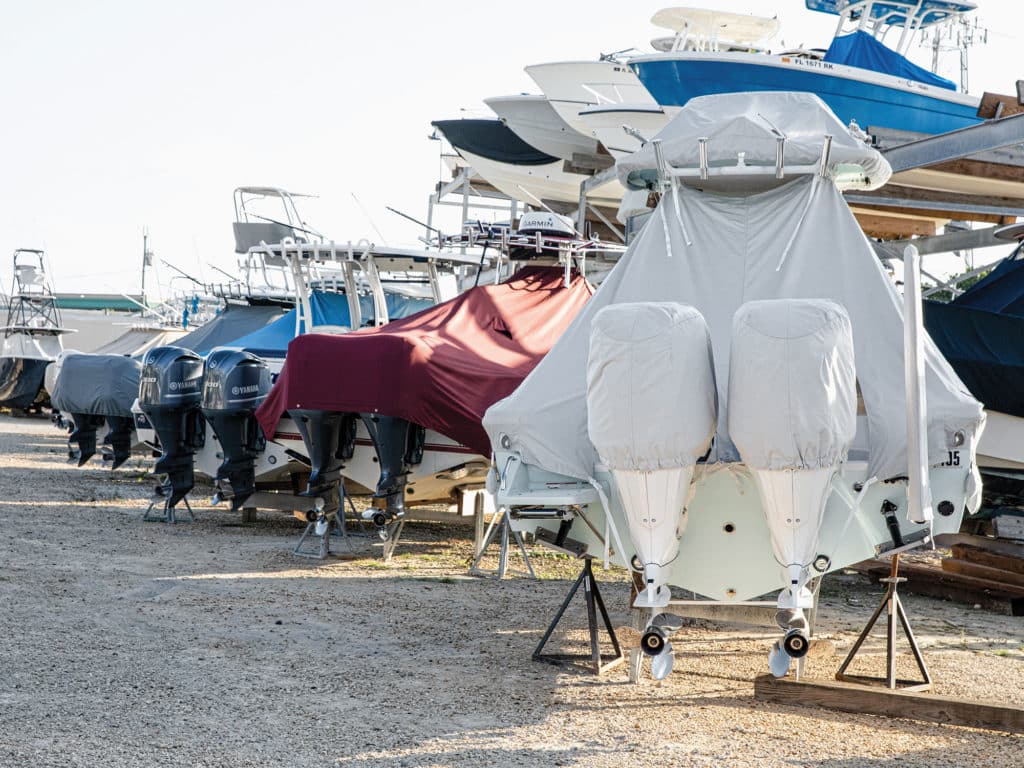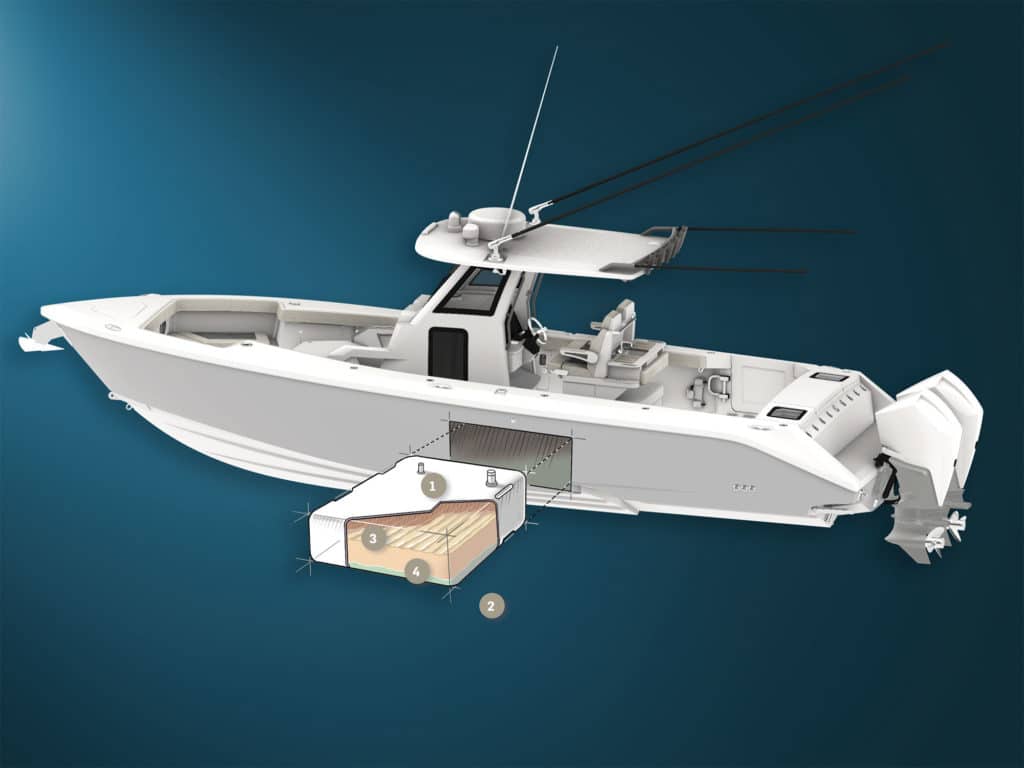
Next spring’s fishing plans can quickly turn to frustration if you leave your boat poorly winterized. Months of disuse during freezing winters can corrode or crack fittings and hoses and render outboards and pumps fouled and broken.
Even if you live in a warm region, the season’s relentless cold fronts and stiffer winds can keep you and your boat off the water for months. Conversely, some boaters leave their vessels parked all summer in Florida while they retreat up north for cooler temperatures.
“We use the phrase ‘extended storage’ when we talk about protecting an outboard,” says David Meeler, Yamaha’s product information manager. “So whether you’re putting the boat up for winter or going north for the summer, much of the process is still the same.”
The center-console, outboard-powered boats that a great majority of saltwater anglers use require specific but not onerous storage prep. Much can be done by the boat owner, although dealers are well-equipped to assist, particularly on the Northeast coast where prolonged and harsh cold weather demands additional care to vessels.
“We have some guys dropping their boats off here in mid-September, and they stay until April or May,” says Don Ditzel, vice president of Comstock Yacht Sales & Marina in Brick Township, New Jersey. When Comstock techs haul out a boat, they prep it for winter by running nontoxic antifreeze through all the water systems, including sinks, toilets, ice makers, washdown pumps—whether fresh or salt water. “Water freezes, it expands and cracks fittings,” Ditzel says. “We’re just replacing the water with antifreeze.”
For instance, with a sink, the process involves connecting the antifreeze container to the existing freshwater pump, and then turning on the faucet and letting the fluid course through the pipes until it exits the faucet. On a boat, air-conditioning units are water-cooled, so the same process applies, he says.
Often, techs also will pull the drain hose off the fish boxes so that if any water collects, it can exit.
With electronics, Ditzel says Comstock used to remove the multifunction displays. But with flush-mounted systems, that’s inconvenient. So, be sure to check the temperature rating for your MFDs.
The majority of boaters shrink-wrap their vessels for storage or use a boat cover. If shrink-wrapping a vessel with a radar array or dome, be careful not to wrap it too tightly.
Turn off the circuit breakers to your electronics. If you store your boat on land, you also can disconnect your batteries by removing the leads, and then attach the batteries to a trickle charger to keep them topped off during your break. If you leave your boat in the water, you must have power for your bilge pumps.
Anglers with onboard security systems must also keep them powered if they’re concerned about theft. But you can also use these systems to monitor your vessel remotely to check voltages and set alerts in case something goes wrong.
Meeler says stabilizing the fuel aboard your vessel ranks as a top consideration for storage, particularly if you use ethanol blends. Select a butanol-based stabilizer rather than one that is alcohol-based. A general rule of thumb is to leave your fuel tank 7/8 full and stabilized. Be sure to run some of that stabilized fuel through your engine so it enters the fuel-injection system.
If you store your boat and fuel-injected engine on a lift over salt water, Meeler suggests running fogging oil—a heavy oil-to-fuel mixture—through the outboard by connecting a small tank of that mixture to the main fuel inlet.
Whenever possible, store the engine fully down and trimmed in so any water runs out the lower unit. If you can’t do that, put a contractor-type trash bag over the lower unit and secure it with a bungee.
Meeler says boaters don’t have to flush outboards with antifreeze—that’s more of an inboard or inboard/outboard need—but some dealers do it as an extra precaution. Change out inline fuel filters and the water-separation filter, and change the engine and lower-unit oil. And don’t reuse the crush washers that fit on the ends of the screws for the engine oil and gear lube drain/fill ports.
“Spend a little time on the trailer too so that there are no pressure points beneath the boat,” Meeler says. “It’s commonsense stuff. Take a little extra time, and you’ll have a calmer mind while you’re away from your boat.”

Ethanol Checklist
- Long-term boat storage calls for steps to prevent damage-inducing phase separation in the fuel tank when using ethanol-laced gasoline.
- When ethanol in the gas absorbs too much moisture (from tank condensation, for example), it separates into a corrosive, noncombustible layer at the tank’s bottom, as illustrated here.
- To prevent phase separation during storage, fill the tank to 7/8 full (to minimize condensation) using non-ethanol fuel where available.
- With or without ethanol-laced gas, treat the fuel with a butanol-based stabilizer for long-term storage.









